Want to learn the difference between Japanese vs. American diets?
Well, you landed on the right website (ItsJapanese.com!).
But before we get into the differences…
I’ll assume you don’t know much about the Japanese diet since you’re here, right? Well no worries.
- In Part 1, you’ll get the basic gist of the Japanese diet
- In Part 2, you’ll discover the differences between Japanese vs American Diet
Cool? Cool.
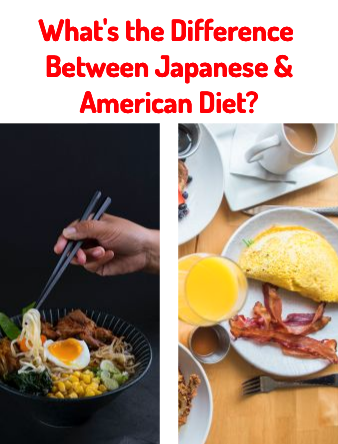
Part 1: Introduction to the Japanese Diet
The Japanese diet is full of culture and historical significance, with roots in ancient Japan. One of the main influences on the Japanese diet has been China, but Japan has retained its unique food culture due to its isolated geography. Many fermented dishes were used like pickles and condiments so that they wouldn’t go bad. For example, the origin of sushi comes from a method of preserving fish and rice.
Since Japan is surrounded by the ocean, seafood is also an important part of the diet. In fact, it’s difficult to be completely vegetarian in Japan because most dishes are flavored with fish broth. Meat is expensive and not produced as much in Japan, so it is used in smaller quantities. In general, the Japanese diet is healthy because most people consume fermented foods, fish, and rice.
However, more recently the Japanese diet has incorporated influences from the west. There are unique Japanese foods and dishes that combine different cultures like Japanese curry, Japanese bread, and cod-roe pasta.
Part 2: Differences between Japanese vs American Diet
The U.S. diet is less healthy due to the number of processed foods and because of the shorter history of its food culture. Compared to Japan, there isn’t any kind of food tradition that dates back thousands of years. The U.S. is a melting pot of different cultures and cuisines. This means that there is less reliance on natural food sources compared to Japanese cuisine.
So, let’s look at some differences.
1. Breakfast
Japan: Breakfast can sometimes be the largest meal
Japanese people value breakfast and a typical Japanese breakfast might contain rice, eggs, fish, miso soup and more.
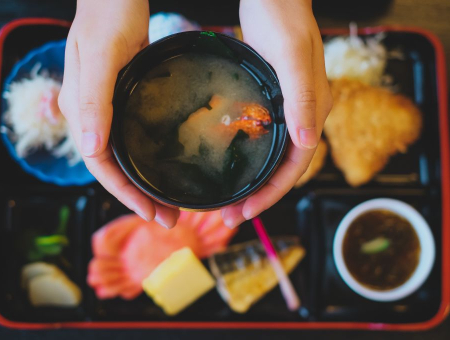
USA: Sweets for breakfast
The U.S. diet can sometimes have sweets for breakfast. Foods like donuts, waffles, pancakes, and cereal might be considered desserts in other parts of the world.
2. Lunch
Japan: Typical lunch in the Japanese diet is a bento box
In Japan, people typically bring bento boxes to their work or school. These boxes contain rice with different side dishes.
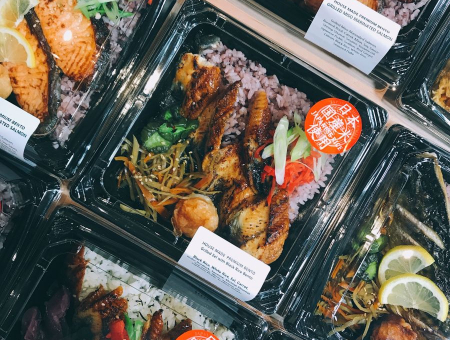
USA: Sandwiches are a common lunch food
Compared to the Japanese diet, a typical U.S. lunch is a sandwich. BLTs and peanut butter and jelly are popular sandwich options.
3. Carbohydrates
Japan: Rice is the main source of carbohydrates
The Japanese consume rice as one of the main dishes. In Japanese, the word for rice is the same as the word for food — “gohan.” The side dishes are usually salty so that it compliments the plain rice. Many people eat Japanese rice for all three meals of the day.

USA: Bread, potatoes, and pasta are the main source of carbohydrates
In the U.S. diet, rice is not a main source of carbohydrates. It’s more common to have bread, potatoes, or pasta. In most cases, these carbohydrates need to be cooked with fatty ingredients like butter or cream.
4. Dairy Products
Japan: Dairy products are not common in a traditional Japanese diet
Dairy products are a newer food in Japanese cuisine. For a long time, there were no dairy products in Japan. Traditional Japanese cuisine does not use milk or cheese.
USA: Dairy products are popular
Milk, cheese, yogurt, and other dairy products are a regular part of the U.S. diet. Most people in the U.S. will eat at least one dairy product during the day.
5. Protein & Meats
Japan: Protein can come from many different sources
Japan is surrounded by the ocean so it is easy to get a hold of seafood. Protein can come from many sources in the Japanese diet including seafood, meat, and soybeans.
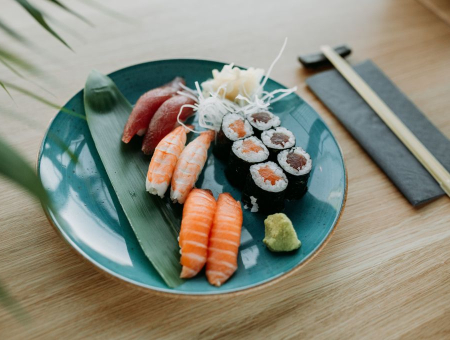
USA: Meat is more common than seafood
There is a large amount of meat that is produced in the U.S. Most people eat seafood less often than meat.
6. Vegetables
Japan: Vegetables are important in the diet
Japanese cuisine has many ways to cook vegetables. They can be braised, fried, and even pickled. Japanese people tend to consume a large amount of vegetables.
USA: Low in vegetables
In the U.S., vegetables are not consumed as much as in the Japanese diet. Vegetables often come in cans or it is frozen. There are not many vegetable dishes in the U.S. diet.
7. Portion Sizes
Japan: Small portion sizes
Japanese diet contains small portion sizes. Japanese people value many different tastes in smaller quantities than one large dish. This means a healthier style of eating where each small dish is savored and thoughtfully eaten.
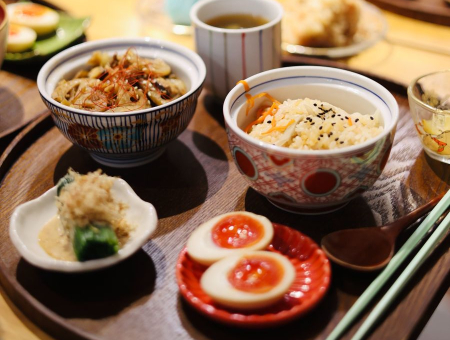
USA: Larger portion sizes
The U.S. is famous for its large portion sizes and the diet reflects this. A typical fast food meal in the U.S. is much larger than in other parts of the world.
8. Others
Japan: An abundance of soybeans
Soybeans are an important part of the Japanese diet. Miso, natto (fermented soybeans), soy sauce, tofu, and bean curd are all made with soybeans.
USA: An abundance of fried foods
Fried foods are common in the U.S. diet. Some examples are fried chicken, french fries, and onion rings.
Conclusion
Now you know a bit Japanese vs American diets and what makes them different.
Are there other differences or similarities that I might have missed?
Leave a comment!
If you’re interested in learning more about Japanese food, here are some relevant articles:
Thanks for reading (and eating)!
Team IJ